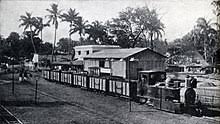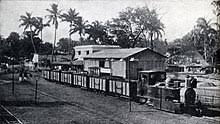
The Amta Martin Railway was launched on June 2, 1889. For about 72 years this train ran, Martin Rail’s company name is Martin & Company. This move was planned by Sir Rajendra Mukherjee, an industrialist named after whom, to connect the people of the city with the village and to expand trade and commerce. This Martin train was running from Howrah oil ghat to Amata. Howrah Oil Mill Ghat which is now Howrah Maidan and Amata Railway Station which is now BDO Office and Water Tank and Amata Pona Bazar. The stations from Howrah oil ghat to Amta are Oil ghat – Baltikuri – Bankra – Salop Katila – Makordah – Domjur – Dakshin Bari – Bargachia – Patial – Munshi Hat – Maju – Dakshin Maju – Jhansi – Panpur – Harish Dad pur – Amta.No station had a platform, one had to step two or three steps from the ground to board the train Some stations had waiting rooms for railway employees. Which still remain as memories in the backyard of the pond and in various other places. Those lines are closed so people use those places for their own needs. Amta was a commercial center ranging from various cottage industries to salt industry, jute manufacturing industry, fishing industry and crops were transported by train daily by traders. The speed of the train was very low, running at a speed of about 30 km, the sound of the small engine was blowing the whistle, the train was moving on the roof of the train and transporting passengers. In those days, even if someone walked along the train line, there was no fear like it is now. To slow down the train, the train swayed like a palanquin
From Howrah Maidan, matin rail used to go to 4 ends Howrah -Amata, Howrah -Shia khana, Howrah -Chapa Danga, Howrah -Janai.
After the independence of India, the road was built in Howrah Amata village, as a result of which the importance of matin train decreased with time after bus traffic. In keeping with modernity, time became the main importance of people for which more number of people started giving more priority to buses which reach in less time. It is heard that most of the castes traveling by train at that time used to transport without buying tickets, for which the clay company started losing money for a long time.



